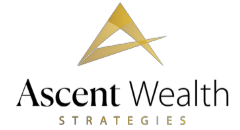Comparing Cash Balance and Defined Benefit Plans for Business Owner Wealth Building
Introduction
Retirement planning is a complex landscape filled with various options, two of which are cash balance plans and traditional defined benefit plans. For business owners eager to maximize contributions and retirement savings, unraveling the intricacies of these plans is essential, especially when considering stacking them with other benefit options. This article offers a comparison and exploration of these two popular retirement solutions.
Cash Balance Plans: A Hybrid Approach
Cash balance plans are often considered a hybrid between defined benefit and defined contribution plans. Here's how they work:
Key Features:
Individual Accounts: Each participant has a hypothetical account, though assets are pooled.
Defined Contributions and Interest Credits: Contributions and interest credits are defined, but investments are managed collectively.
Investment Risk: The employer bears the investment risk.
Flexibility: Cash balance plans offer flexibility in contributions and benefits.
Benefits for Business Owners:
Higher Contribution Limits: Business owners can make higher tax-deductible contributions.
Flexibility in Design: Cash balance plans can be tailored to meet specific business needs and goals.
Stacking Opportunities: These plans can be combined with 401(k)s or profit-sharing plans, allowing for substantial contributions.
Defined Benefit Plans: Traditional Pension
Defined benefit plans provide predetermined retirement benefits, and here's how they function:
Key Features:
Guaranteed Benefits: Benefits are defined and guaranteed, based on factors like age, years of service, and salary.
Employer-Funded: The employer is responsible for funding the plan and managing the investments.
Investment Risk: The employer bears the investment risk.
Regulatory Requirements: Precise funding and management are necessary to avoid penalties.
Benefits for Business Owners:
Significant Contributions: Business owners can make large tax-deductible contributions.
Predictable Benefits: Defined benefit plans offer a stable, guaranteed retirement benefit.
Stacking Opportunities: Similar to cash balance plans, defined benefit plans can be stacked with other retirement options, maximizing savings.
Comparison: Cash Balance vs. Defined Benefit Plans
Flexibility: Cash balance plans generally offer more flexibility in design and contributions.
Contribution Limits: Both plans allow substantial contributions, but cash balance plans may permit higher limits for some participants.
Investment Control: In both plans, the employer controls the investments and bears the risk.
Stacking with Other Plans: Both can be part of a stacking strategy, allowing business owners to maximize tax benefits.
Conclusion: Crafting the Perfect Retirement Strategy
For business owners, both cash balance and defined benefit plans provide paths to maximize contributions and tax advantages, particularly when used as part of a stacking strategy. The choice between them will hinge on the business's specific needs, goals, and employee demographics. Consulting with financial professionals who specialize in these plans can provide tailored insights and strategies to align the right plan with the unique circumstances of the business.
Note: The information provided in this article is for educational purposes only and should not be construed as financial or tax advice. Laws and regulations can change, and individual circumstances can vary widely. Consult with a financial professional or tax advisor knowledgeable about your specific situation before making any decisions.
